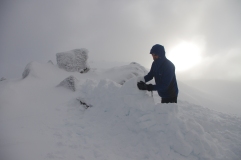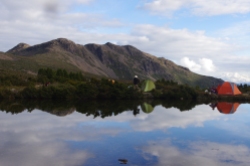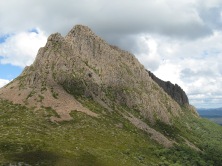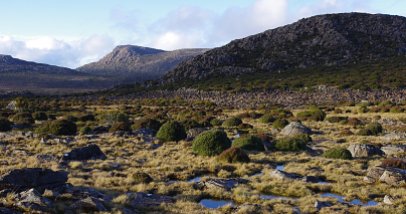 The name ‘Monaro’ is of Aboriginal origin, meaning a high plateau or high plain. There is something distinctive about this place and the landscape and the people.
The name ‘Monaro’ is of Aboriginal origin, meaning a high plateau or high plain. There is something distinctive about this place and the landscape and the people.
It is taking some time to acclimatise to the Monaro but it has me captivated, it has me intrigued. Never before have I ever experienced anything like this. Driving out of Bombala, several days after a torrid wind event, towards the Snowy Mountains, I covered the ground of the Monaro farmlands; the bare hills and gentle valleys, the steep, short sided ravines, the rocky outcrops and the rangelands, the rivers now reduced to waterholes, the solitary gums and distant eucalypt woodlands, and as I drove I had the feeling that I was in a desert.
Birds in seedheads beside the road laboured into flight. There were more than the usual number of dead birds on the road. Rabbits and hare scooted across bare earth raising dust. Desolation came to mind. A desolate scene; an uninhabited, barren and wretched landscape.
But is it?
When I first arrived here on the Monaro in mid Oct 2009, farmers where feeling elated at the late winter, early spring rains that had fallen over the area. Lingering, late winter, intense weather systems had thankfully carried some of their moisture over the snowy mountains and leaked their last drops across the Monaro. A green veneer grew over the landscape. The farmers were happy with this new colour, green, and the feed it provided, but the soil beneath was still desperately dry and had no moisture to leak. Dams were empty or near empty and the rivers and streams had given up running long ago. They called it a “green drought” and prayed for more rain.
 It seems that this may be the way it is on the Monaro and the way it has always been for the white settlers who came to farm sheep on the plains. Desperately dry, hot summers and a landscape devoid of feed. But I think that now, 150 or so years on, it is even more desperately dry and devoid of feed and decent soil. In the past, stockmen on horseback walked their herds overland via the dry Monaro plains and hills to the alpine areas of the now Kosciuzko National Park, where they stayed until late Autumn. Here their animals grazed on large areas of rich native grasses and generally had abundant water. This is no longer permitted and so the Monaro is now grazed all year round.
It seems that this may be the way it is on the Monaro and the way it has always been for the white settlers who came to farm sheep on the plains. Desperately dry, hot summers and a landscape devoid of feed. But I think that now, 150 or so years on, it is even more desperately dry and devoid of feed and decent soil. In the past, stockmen on horseback walked their herds overland via the dry Monaro plains and hills to the alpine areas of the now Kosciuzko National Park, where they stayed until late Autumn. Here their animals grazed on large areas of rich native grasses and generally had abundant water. This is no longer permitted and so the Monaro is now grazed all year round.
As I drive the early summer landscape of the Monaro, wind of several days previous now died, I ponder this landscape: desolate or not?, future farmland or not? I am captivated by it and am taken on a journey to within its realm. I will seek out its nooks and crannies, peaks and troughs and try to understand this land.
If Li Po were here today I wonder what he may have had to say.
Andrew Stanger lives on the Monaro. You can find his blog here.























































January 16, 2012 at 12:56 pm
They should call it by its real name, MONERO not Monaro, thats a misinterpretation